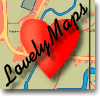
Most commonly used graphic formats
The images we see on the WWW nowadays basically
are in two types: raster and vector. Not every format is suitable for
displaying in the browsers, only some are supported. At this moment there
is not yet a real standard vector format for the Web.

In the first pixel row of the logo the following colour scheme can be seen:
Additional
![]() The
GIF format has some extra characteristics, above the other commonly used
format JPEG. GIF supports transparency, interlacing and has the possibility
of generating an animation from a sequence of GIF images.
The
GIF format has some extra characteristics, above the other commonly used
format JPEG. GIF supports transparency, interlacing and has the possibility
of generating an animation from a sequence of GIF images.
![]() A
browser that supports GIF89a can show transparency, in GIF89a one specific
colour (one specific indexed number) can be indicated as transparent,
not visible. This transparency is a very important item for web designers.
Also non-square shapes can be shown on top of the background.
A
browser that supports GIF89a can show transparency, in GIF89a one specific
colour (one specific indexed number) can be indicated as transparent,
not visible. This transparency is a very important item for web designers.
Also non-square shapes can be shown on top of the background.
![]() With
interlacing an image shows in a gradual increase of the resolution, the
image will show already in the browser during download. The surfer is
not facing an empty area, but sees what he/she is waiting for. During
interlacing the GIF image is not stored line by line, as it usually is,
but in blocks. The image is downloaded block by block, and each block
is shown in the browser at the moment that it is downloaded. An interlaced
image is slightly bigger than a normal GIF. Only use interlacing for larger
images.
With
interlacing an image shows in a gradual increase of the resolution, the
image will show already in the browser during download. The surfer is
not facing an empty area, but sees what he/she is waiting for. During
interlacing the GIF image is not stored line by line, as it usually is,
but in blocks. The image is downloaded block by block, and each block
is shown in the browser at the moment that it is downloaded. An interlaced
image is slightly bigger than a normal GIF. Only use interlacing for larger
images.
![]() A
GIF animation is nothing more than a sequence of GIF images played at
a pre-set speed (David Siegel refers to it in his book "Creating
Killer Web Sites" as a "poor-man's video"). Here a small
example of the logo of "LovelyMaps" containing the first five
images resulting in the animation as shown:
A
GIF animation is nothing more than a sequence of GIF images played at
a pre-set speed (David Siegel refers to it in his book "Creating
Killer Web Sites" as a "poor-man's video"). Here a small
example of the logo of "LovelyMaps" containing the first five
images resulting in the animation as shown:






When to use GIF compression
![]() This
compression is best used for images that have solid colours. Most thematic
maps are within this category. Also when a simple animation has to be
made GIF is a good format to use. For images that have graduated colours
another compression technique is advisable, JPEG.
This
compression is best used for images that have solid colours. Most thematic
maps are within this category. Also when a simple animation has to be
made GIF is a good format to use. For images that have graduated colours
another compression technique is advisable, JPEG.